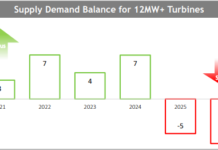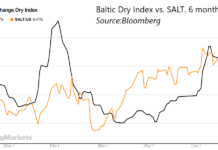Tom Konrad CFA

On March 7th, Maxwell Technologies (NASD:MXWL) announced problems with revenue timing. Unlike Lime Energy (NASD:LIME), which I discussed in the previous part of this series, there was no hint of any fictitious revenue. The disclosure was very specific that “The errors relate to the timing of recognition of revenue from sales to certain distributors.” The announcement went on to discuss “arrangements … regarding the payment terms for sales” at these distributors. As a result of the discovery, “certain employees were terminated and our Sr. Vice President of Sales and Marketing resigned.” Maxwell is reviewing deficiencies in its internal controls.
What it Means
Too-early revenue recognition is one of the most common accounting problems, and often results when managers push employees to help them hit too-aggressive growth targets. This makes sense given Maxwell’s recent series of earnings disappointments and reduced growth estimates. While the terminated employees were most likely the ones who did the book-fiddling, and the Senior VP who resigned gave them the incentives to fiddle, senior management and the board still bear the responsibility for the Senior VP’s incentives, and for failing to catch the problems sooner.
While the announced plans to improve internal controls are absolutely necessary, the company should also re-examine its culture. Not only should controls make it harder to cheat, but employees and executives should not be rewarded for their numbers, but also for coming by those numbers honestly.
More to Come?
Like analysts at Piper Jaffray, I expect MXWL will remain under pressure until its revised financial statements are released. I initially also agreed with them that the stock would recover when the filings are made.
Now I’m not so sure.
I recently began co-managing a green stock focused hedge fund with Jan Schalkwijk, CFA. In November, when we were discussing Maxwell for possible inclusion in the fund, Jan brought the rapid growth of Maxwell’s accounts receivable.
Although there can be many other causes, improperly recognized revenue usually shows up in growth of accounts receivable (AR). AR is supposed to be money owed to the company by its customers. If product has been shipped to a distributor, but payment need not be made until it is sold, then that product should still be considered inventory, not booked as revenue and moved to AR. Yet this is what seems to have happened at Maxwell.
Between Q3 2011 and Q3 2012, Maxwell’s net accounts receivable grew by $21 million to $53 million. When Jan brought this to my attention, I asked Maxwell’s CEO, David Schramm about it by email. He replied:
I would say there are two factors for the increase in accounts receivable. First, our sales have been increasing and that naturally drives the receivables balances higher. The second reason is that a number of customers have been paying slowly. While it is not unusual to have one customer pay slowly, it is not normal for us to have more than one customer pay late. In our current case, there are three customers who are paying slower than normal. We have evaluated these customers and their ability to pay and believe the accounts are fully collectible.
Jan and I were not entirely comfortable that this completely accounted for rapid growth of AR (revenues only grew 10% over the same period.) Nevertheless, we found Schramm’s statement sufficiently believable to treat the growth of AR as something to watch, not something which would make us sell the stock (then trading below $7.) We planned to re-assess our decision this quarter, if AR did not begin to reverse course. We also took comfort in the aggressive buying of MXWL by insiders. They would not have been buying had they suspected Maxwell’s results were the result of improper revenue recognition.
In hindsight, I suspect the “slow payment” by customers may have been part of how the employees responsible were hiding the early revenue recognition.
We now know the accounts receivable growth was a red flag. The 10% increase in revenue would most likely be matched by a 10% increase in AR, so revenue growth accounts for only $2 to $3 million of the $21 million increase in AR. Another $12 million is the misreported revenue that was announced on Thursday. That leaves a gap of $6 million or so to be accounted for by customers who have recently begun paying more slowly.
To put the AR increase in perspective, I decided to chart Maxwell’s quarterly revenue and AR going back to the end of 2007. Perhaps customers had been paying unusually quickly in 2011, as opposed to slowly in 2012.
In order to remove any seasonal effects, I used numbers from the third quarter (Q3) of each year. I then adjusted these numbers as best I could to account for the changes resulting from the mis-reported revenue contained in the March 7th press release.
Both the as-reported and adjusted numbers are shown in the graph below.
The graph also shows days to pay, which is the number of days it would take to generate each quarter’s accounts receivable given the current revenue. If AR had been growing only in proportion with revenue, days to pay should have remained roughly constant.
As you can see, it took 57 days to collect payment from the average customer in Q3 2008, but it took 110 days in Q3 2012. Even after we account for the misreported revenue announced on March 7th, adjusted Q3 2012 days to pay remained at 89. If the adjusted numbers are to believed, Maxwell’s average customer was
taking between 70 to 80 days to pay in the four years to 2011, but was taking almost 90 days to pay in 2012.
It seems quite possible to me that behind the growing Accounts Receivable lies yet more mis-reported revenue. We know that some customers had payment terms which “had not been communicated to Maxwell’s finance and accounting department and, therefore, had not been considered when recording revenue on shipments to these distributors.” Is it unreasonable to assume that there are other customers who seem to be paying slowly also have lenient payment terms of which Maxwell’s accounting department is not yet aware?
If we were to assume that all the misreported revenue had already been found, we would have to come up with some other explanation as to why Maxwell’s customers have been paying more slowly in 2012 than they have in the past. Sometimes the simplest explanation is the right one.
Conclusion
While we will only know the truth when Maxwell files its results, it seems likely to me that the company developed a culture which pushed hitting the numbers even if they had to be fudged.
After accounting for the fudging revealed so far, the recent growth in Accounts Receivable cannot be explained solely by revenue growth over the same period and by the misreported revenue already announced. While it is possible that Maxwell’s customers have been paying more slowly in 2012 than in previous years for their own reasons, it is also possible that there is more aggressive accounting yet to be revealed.
With this in mind, I have sold my holdings of Maxwell at a small loss. I may choose to buy the stock back if the price falls enough to account for the revelations I fear may be yet to come.
UPDATE: On March 19th, Maxwell’s independent accounting firm McGladrey LLP resigned. McGladrey stated that it “could no longer rely on management’s representations,” and that “there are material weaknesses in [Maxwell’s] internal control over revenue recognition and potentially, more broadly, in [its] overall control environment.” While this statement adds credence to my suspicion that there could be more misreprted revenue than initially disclosed, it also reflect badly on McGladrey. Its independent accountants are supposed to provide assurance as to the quality of Maxwell’s internal controls. McGladrey completely failed to detect these weaknesses until after the damage had been done.
Disclosure: Long LIME
This article was first published on the author’s Forbes.com blog, Green Stocks on March 12th.
DISCLAIMER: Past performance is not a guarantee or a reliable indicator of future results. This article contains the current opinions of the author and such opinions are subject to change without notice. This article has been distributed for informational purposes only. Forecasts, estimates, and certain information contained herein should not be considered as investment advice or a recommendation of any particular security, strategy or investment product. Information contained herein has been obtained from sources believed to be reliable, but not guaranteed.








